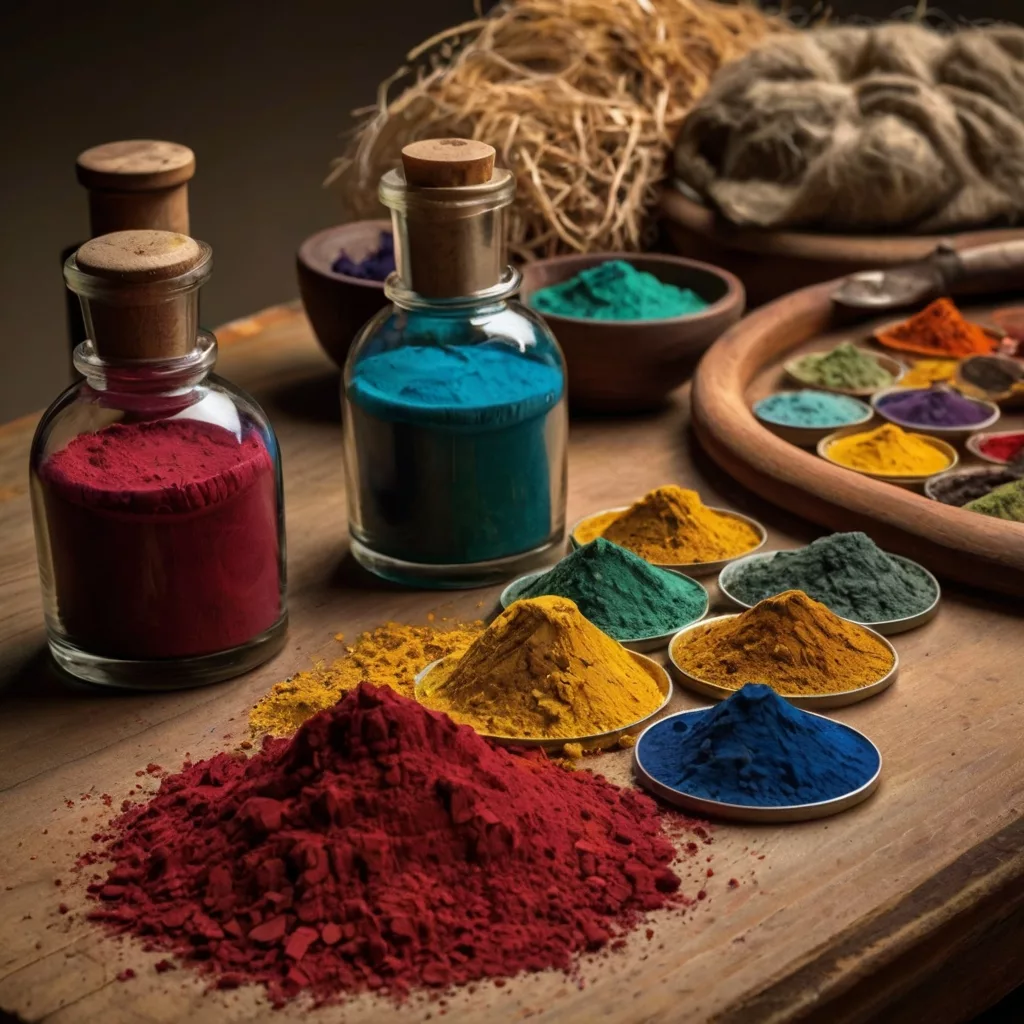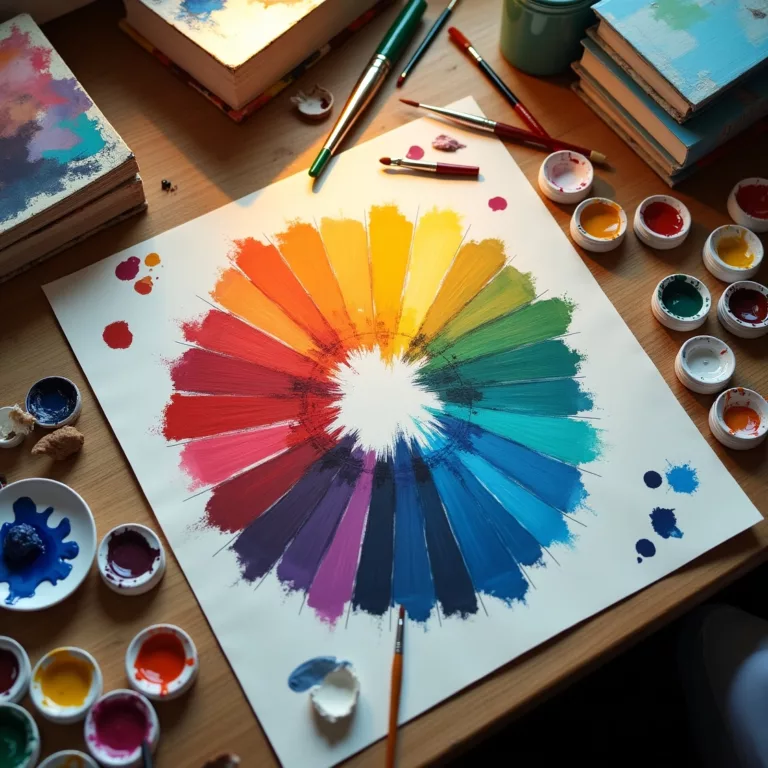Ancient Pigments: How Colors Were Made Centuries Ago
The vibrant hues of ancient art continue to captivate our imagination today, but how were these ancient pigments created without modern chemical processes? From the majestic blues of Egyptian tombs to the rich reds of Roman villas, these colors tell stories not just through their imagery but through their very composition. This comprehensive exploration delves into the fascinating world of how colors were made centuries ago, revealing the ingenuity of our ancestors and their remarkable understanding of the natural world.
The Origins of Ancient Pigment Making
Long before synthetic dyes and mass-produced paint tubes, artists and craftspeople sourced their ancient pigments directly from the earth. The earliest evidence of pigment use dates back over 40,000 years, with ochre appearing in cave paintings across Africa, Europe, and Australia. These ancient pigments weren’t merely decorative—they were integral to cultural expression, religious ceremonies, and the documentation of human experience.
The creation of ancient pigments required extensive knowledge of local materials and elaborate processing techniques. What might seem primitive by today’s standards actually demonstrates sophisticated understanding of material properties and chemical reactions, even without the formal scientific framework we use today.
Earth Pigments: The Foundation of Ancient Color
Ochres: The First Ancient Pigments
Among the most widespread ancient pigments were ochres—naturally occurring earth pigments containing iron oxide. These versatile materials produced a spectrum of colors from yellow to deep red, depending on the iron compounds present:
- Yellow ochre (goethite) was abundant and easy to process
- Red ochre (hematite) could be created by heating yellow ochre, demonstrating early pyrotechnology
- Brown ochres combined various iron compounds for rich, earthy tones
The accessibility and stability of ochres made them fundamental to color creation across all ancient civilizations. In Aboriginal Australian art, ochre remains culturally significant for how colors were made centuries ago and continues to be used in traditional practices today.
Green Earth and Beyond
Other mineral-based ancient pigments included:
- Green earth (celadonite and glauconite), widely used in Roman art
- Umber and sienna, iron-rich soils with manganese content for deeper browns
- White clays like kaolin, used alone or as a base for other colors
Precious Blues: Ancient Pigments of Royalty and Ritual
Egyptian Blue: The First Synthetic Pigment
Perhaps the most remarkable achievement in ancient pigments was Egyptian blue (calcium copper silicate), considered the world’s first synthetic pigment. Created around 2200 BCE, this brilliant blue demonstrates the sophisticated chemical knowledge of ancient Egyptians:
- Copper compounds were combined with calcium carbonate and silica
- These materials were heated to approximately 900°C
- The resulting chemical reaction produced a vibrant blue crystal
- This was ground into a fine powder and mixed with binders
The complexity of this process shows how advanced techniques for how colors were made centuries ago could be, even millennia before modern chemistry.
Lapis Lazuli and Ultramarine
Among the most precious ancient pigments was ultramarine, derived from the semi-precious stone lapis lazuli. Found primarily in what is now Afghanistan, this intensely blue stone traveled the ancient trade routes to reach artists throughout Europe and Asia:
- Lapis lazuli was ground into powder and processed through an elaborate series of washings
- The resulting pigment was more valuable than gold during the Renaissance
- Its use was often reserved for the most important subjects, such as the robes of the Virgin Mary
The expense and rarity of ultramarine exemplifies how ancient pigments could hold not just color value but significant economic and symbolic importance.
Organic Sources: Plant and Animal Ancient Pigments
Plant-Derived Colors
Nature’s palette provided numerous sources for ancient pigments:
- Indigo from the Indigofera plant created deep blues through a complex fermentation process
- Madder root yielded rose and red hues used extensively in textiles
- Weld and saffron produced yellows, though often less lightfast than mineral alternatives
- Walnut husks and oak galls created browns for inks and dyes
The seasonality and regional availability of plants meant that knowledge of how colors were made centuries ago using botanical sources was particularly valuable and often closely guarded.
Cochineal and Tyrian Purple: Precious Animal Pigments
Some of the most luxurious ancient pigments came from animal sources:
- Tyrian purple, extracted from the mucus gland of certain sea snails, required thousands of mollusks to produce a single gram of pigment
- Cochineal red, derived from insects native to the Americas, became a valuable export after Spanish colonization
- Lac, secreted by lac insects, provided rich reds throughout Asia
These labor-intensive processes made such ancient pigments extremely valuable, often reserved for royalty or high religious purposes.
Binding Ancient Pigments: From Powder to Paint
Creating usable paint from ancient pigments required binding agents to hold the color particles together and adhere them to surfaces. These varied by culture and purpose:
Tempera: The Egg Binder
Egg tempera was among the most refined systems for how colors were made centuries ago into practical paints:
- Egg yolk provided protein (albumin) that created a durable, quick-drying paint
- The emulsion could hold pigment particles in suspension effectively
- Its fast-drying nature allowed for detailed layering techniques
- This medium dominated European panel painting until the rise of oil paint
Other Historic Binders
Across different cultures, various materials served to transform ancient pigments into usable media:
- Gum arabic (from acacia trees) created water-soluble paints similar to modern watercolors
- Animal glues derived from collagen created strong adhesives for pigments
- Wax encaustic techniques, especially popular in Roman-Egyptian funeral portraits
- Lime plaster for frescoes, where pigments were applied to wet plaster and became chemically integrated into the surface
Ancient Pigments Across Civilizations
Egyptian Color Technology
Egyptian artists developed sophisticated systems for ancient pigments that influenced color technology for millennia:
- Egyptian blue and Egyptian green (similar composition but different crystal structure) became widely exported
- Black was created from carbon sources including charred bone and lampblack
- White from calcium compounds including chalk and gypsum
- Their palette of six primary colors carried specific symbolic meanings in their artistic tradition
Classical Greek and Roman Innovations
Greco-Roman civilization expanded upon earlier techniques for ancient pigments:
- Vermilion (mercuric sulfide) became highly prized for its brilliant red
- Lead white provided an opaque, bright white despite its toxicity
- Verdigris (copper acetate) created vibrant but unstable greens
- Elaborate fresco techniques incorporated pigments directly into architectural surfaces
Chinese Pigment Traditions
Chinese artists developed distinctive approaches to how colors were made centuries ago:
- Cinnabar (mercuric sulfide) held particular significance in Taoist alchemy
- Azurite and malachite (copper carbonate minerals) were ground to varying coarseness for different effects
- Pearl white (from ground freshwater pearls) created delicate highlights
- Red lead provided brilliant vermilion alternatives
Pigment Trade: The Ancient Color Economy
The desire for ancient pigments drove significant economic activity:
- Dedicated pigment markets existed in major ancient cities
- Specialized craftspeople focused solely on pigment preparation
- Trade routes spanning continents developed partly to transport color materials
- Some pigments served as currency or tax payments
Understanding how colors were made centuries ago reveals not just artistic techniques but entire economic systems built around the desire for color.
Toxicity and Danger in Ancient Pigment Production
Many processes for creating ancient pigments exposed workers to serious health hazards:
- Lead white production involved exposing lead to vinegar fumes, causing lead poisoning
- Cinnabar and vermilion contained mercury, with toxic effects on the nervous system
- Orpiment and realgar (arsenic sulfides) created yellow and orange pigments but released arsenic compounds
- Copper-based greens often contained corrosive acetic acid
The price for color was often paid in health, demonstrating the extreme value placed on vibrant ancient pigments.
Rediscovering Lost Color: Modern Analysis of Ancient Pigments
Contemporary scientific techniques have revolutionized our understanding of how colors were made centuries ago:
- X-ray fluorescence identifies elemental composition without damaging samples
- Raman spectroscopy detects specific molecular structures in pigments
- Scanning electron microscopy reveals manufacturing techniques through particle shape and size
- Multispectral imaging uncovers pigments no longer visible to the naked eye
These technologies have revealed that ancient statuary and architecture, now appearing white or monochrome, were originally vibrantly painted with ancient pigments in polychrome designs.
The Legacy of Ancient Pigment Technology
The knowledge of how colors were made centuries ago continues to influence contemporary practices:
- Modern artists seeking archival quality often return to ancient formulas
- Cultural heritage conservation relies on understanding original pigment compositions
- Indigenous communities preserve traditional color-making as cultural knowledge
- Environmental concerns have renewed interest in non-toxic natural pigment sources
Conclusion: The Timeless Art of Color Creation
The story of ancient pigments is one of human ingenuity, cultural exchange, and artistic necessity. From humble earth colors to precious blues worth more than gold, these materials shaped how our ancestors viewed and represented their world. As we continue to uncover the secrets of how colors were made centuries ago, we gain not just technical knowledge but insight into the values, trade networks, and aesthetic priorities of past civilizations.
The vibrant reds of Pompeii, the lush blues of medieval manuscripts, and the earthy tones of Renaissance masterpieces all began with these ancient pigments—each with its own story of discovery, processing, and application. In understanding these processes, we connect more deeply with our artistic heritage and the human desire to capture the world in color.
Additional Resources
For those interested in learning more about ancient pigments and how colors were made centuries ago, these resources provide valuable information:
- The Pigment Compendium by Nicholas Eastaugh et al.
- The National Gallery’s Technical Bulletin
- Harvard Art Museums’ Forbes Pigment Collection
- The Material Innovation Lab at University College London
This exploration of ancient color-making continues to evolve as new archaeological discoveries and scientific analyses reveal more about how our ancestors created their vibrant visual worlds.
Art11deco







